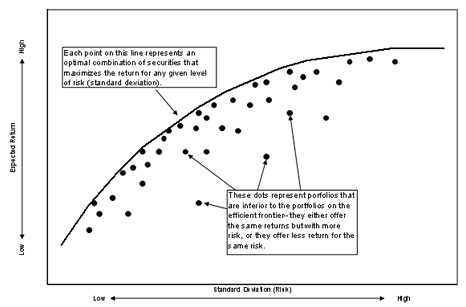Business problems do not usually have a single correct solution. Instead, someone has to make a tough trade-offs.
But, how do you know you fully understand the trade-offs? That is, how can you be sure that there isn’t a better solution than the one you considering?
Determining the efficient frontier– a tool originally developed for finance and now applied to many business problems, will help you. In finance, the efficient frontier is the curve of all investments that maximize return for a given level of risk (standard deviation). The graph below (from InvestingAnswers) shows the curve and points that are not on the curve. So, for any point not on the curve, you could find either an investment with a better return with the same risk or an investment with the same return and a much lower risk. You still have to make the tough decision between return and risk, but the curve narrows your choices to the best solutions.

In network design, you face similar trade-offs between cost and service levels, between capital invested and operating costs, and many more. To better analyze these trade-offs, you need to create this efficient frontier. Multi-objective optimization builds this trade-off curve for you.
